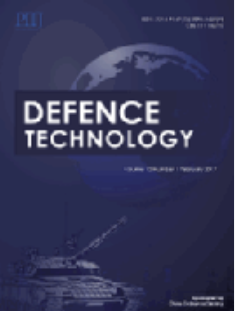3D printed hybrid rocket fuels with μAl core-shell particles coated with polyvinylidene fluoride and polydopamine: Enhanced combustion characteristics
IF 5
Q1 ENGINEERING, MULTIDISCIPLINARY
引用次数: 0
Abstract
3D printing technology enhances the combustion characteristics of hybrid rocket fuels by enabling complex geometries. However, improvements in regression rates and energy properties of monotonous 3D printed fuels have been limited. This study explores the impact of poly (vinylidene fluoride) and polydopamine-coated aluminum particles on the thermal and combustion properties of 3D printed hybrid rocket fuels. Physical self-assembly and anti-solvent methods were employed for constructing composite μAl particles. Characterization using SEM, XRD, XPS, FTIR, and μCT revealed a core-shell structure and homogeneous elemental distribution. Thermal analysis showed that PVDF coatings significantly increased the heat of combustion for aluminum particles, with maximum enhancement observed in μAl@PDA@PVDF (denoted as μAl@PF) at 6.20 kJ/g. Subsequently, 3D printed fuels with varying pure and composite μAl particle contents were prepared using 3D printing. Combustion tests indicated higher regression rates for Al@PF/Resin composites compared to pure resin, positively correlating with particle content. The fluorocarbon-alumina reaction during the combustion stage intensified Al particle combustion, reducing residue size. A comprehensive model based on experiments provides insights into the combustion process of PDA and PVDF-coated droplets. This study advances the design of 3D-printed hybrid rocket fuels, offering strategies to improve regression rates and energy release, crucial for enhancing solid fuel performance for hybrid propulsion.
聚偏氟乙烯和聚多巴胺包覆μAl核壳颗粒的3D打印混合火箭燃料:增强燃烧特性
3D打印技术通过实现复杂的几何形状,增强了混合火箭燃料的燃烧特性。然而,单调的3D打印燃料的退化率和能量特性的改善受到限制。本研究探讨了聚偏氟乙烯和聚多巴胺包覆铝颗粒对3D打印混合火箭燃料的热性能和燃烧性能的影响。采用物理自组装法和反溶剂法制备复合μAl粒子。通过SEM、XRD、XPS、FTIR和μCT对其进行表征,发现其核壳结构均匀,元素分布均匀。热分析表明,PVDF涂层显著提高了铝颗粒的燃烧热,其中μAl@PDA@PVDF(表示为μAl@PF)的燃烧热最大,达到6.20 kJ/g。随后,采用3D打印技术制备了纯μAl和复合μAl颗粒含量不同的3D打印燃料。燃烧试验表明,与纯树脂相比,Al@PF/Resin复合材料的回归率更高,与颗粒含量呈正相关。燃烧阶段的氟碳-氧化铝反应强化了Al颗粒的燃烧,减小了残渣的尺寸。基于实验的综合模型可以深入了解PDA和pvdf涂层液滴的燃烧过程。这项研究推进了3d打印混合火箭燃料的设计,提供了改善回归率和能量释放的策略,这对于提高混合推进的固体燃料性能至关重要。
本文章由计算机程序翻译,如有差异,请以英文原文为准。
求助全文
约1分钟内获得全文
求助全文
来源期刊

Defence Technology(防务技术)
Mechanical Engineering, Control and Systems Engineering, Industrial and Manufacturing Engineering
CiteScore
8.70
自引率
0.00%
发文量
728
审稿时长
25 days
期刊介绍:
Defence Technology, a peer reviewed journal, is published monthly and aims to become the best international academic exchange platform for the research related to defence technology. It publishes original research papers having direct bearing on defence, with a balanced coverage on analytical, experimental, numerical simulation and applied investigations. It covers various disciplines of science, technology and engineering.
 求助内容:
求助内容: 应助结果提醒方式:
应助结果提醒方式:


